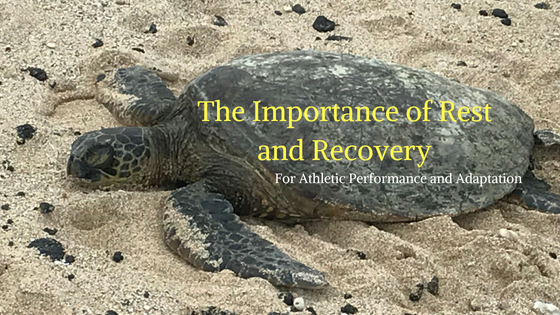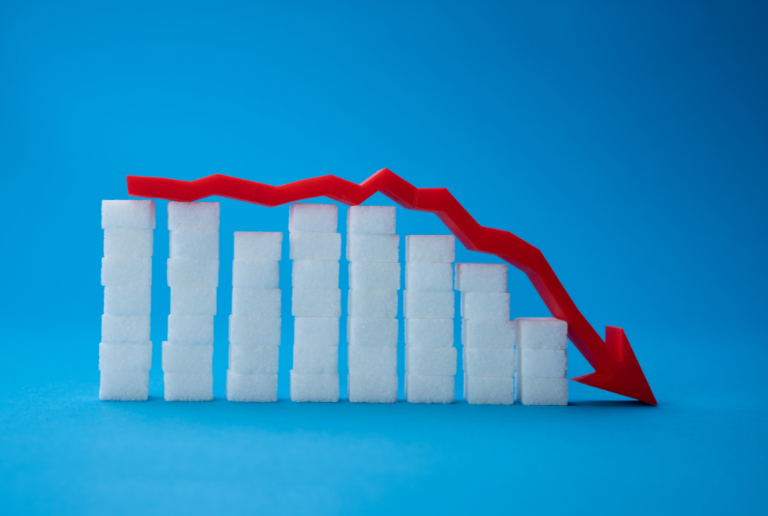The Healthy Upper Limit of Exercise
Introduction:
Too much of a good thing becomes a bad thing, and a good thing is good until it isn’t. All living organisms maintain optimal health by maintaining homeostasis [a stable equilibrium between interdependent elements, especially as maintained by physiological processes]. The natural process of life and health is defined by a balance on every level. An acceptance of this foundational fact helps us understand the functions and needs of the human body within this delicate balance, particularly when it comes to diet (what we put into our bodies) and exercise (what we demand from our bodies). In this paper, we will seek to establish an understanding that there is a healthy upper limit of exercise and physical exertion, particularly as it pertains to endurance sports, over which it becomes detrimental to our health. While it is well established that exercise at some level is beneficial to our overall health, including our heart, less attention has been placed on the effects of too much exercise.
We’ll look at the effects of chronic exercise on the heart as it pertains to risk factors of Atrial Fibrillation and heart flutter. We’ll explore several studies, as well as meta-analysis of related studies and trends, to establish that there is a point at which a person can exercise too much and dissolve many benefits while putting their health at risk.
Next we’ll look at the effects of endurance training and the development of myocardial fibrosis and risks of sudden heart attacks. We’ll look at several studies done on marathoners and ultra-distance athletes and will also specifically examine the information surrounding the sudden death of well-known ultrarunner Micah True.
Lastly, we’ll look at the effects of oxidative stress, seeking to understand at what point does the stress of chronic exercise become too much for the body to handle. We’ll also look at other accumulated health issues caused by chronic exercise.
While the general population still struggles to exercise enough, in the world of endurance sports it’s probable that a high percentage of recreational athletes, along with some elite/professional athletes, train at volumes that are beyond a health upper limit and are detrimental to their health. Higher numbers of athletes are attempting ultra-distance events (running, cycling, multisport and swimming) and as such, it is important that athletes are aware of the potential dangers. Most are entering the endurance world because they want to be more healthy so it’s important that they understand at what point it likely becomes unhealthy.
The Endurance Athlete and Atrial Fibrillation
Atrial Fibrillation (AF) is a fluttering (quivering) or irregular heartbeat that can lead to blood clots, stroke, heart failure and other heart related complications. AF doubles the risk of heart related deaths. This isn’t exactly the type of condition one would expect an endurance athlete to develop. However, research suggests that there is a direct risk factor between long endurance and AF.
Lluis Mont, et al. sought to understand the long-term cardiovascular effects of regular and extreme endurance practice (jogging, cycling, swimming, rowing, etc.) on cardiovascular health. They looked at data from a small series of studies. Most of the studies were predominantly male, median age of 40-50, who had been involved in intense training for many years. They concluded that “endurance sport practice increases between 2 and 10 times the probability of suffering AF.” They suggest possible reasons are related to hypertrophy of the left atrium, inflammatory changes and structural changes (dilation and fibrosis). (1)
Further, “a recent meta-analysis revealed a 5-fold increase in the risk of AF in middle-aged endurance athletes with a striking male predominance.” Matthias Wilhelm, as other researchers have, acknowledges the benefits of exercise on cardiovascular health but also points out that there is growing concern that prolonged endurance training can predispose endurance athletes to arrhythmias. Wilhelm points out that AF risk increases substantially as athletes age and is likely associated with a lifetime accumulation of training and competition. He also suggests left atrial hypertrophy as a factor, as well as left ventricular remodeling. (2)
There are many other studies to suggest the same findings. Consistently, main risk factors include a high volume of training, number of years at high volume, non-elite athletes seem to be at higher risk than elite athletes, and incidences of AF are more prevalent among men than women.
The Endurance Athlete and Myocardial Fibrosis
Micah True, known also as Caballo Blanco, was featured prominently in Christopher McDougall’s popular book “Born to Run.” He was a longtime ultrarunner originally from Boulder, CO. In 2012, at the age of 58, True headed out for a run and failed to return. Searchers found him dead 4 days later, with his legs dangling in a stream. There were no signs of trauma and his autopsy was inconclusive in respect to the actual cause of death. However, notable to our topic, it was found that True was suffering from idiopathic cardiomyopathy which caused his left ventricle to become enlarged. To the best of their determination, True’s “unclassified cardiomyopathy resulted in a cardiac dysrhythmia during exertion.”
Dr. James O’Keefe Jr. (director of Preventative Cardiology Fellowship Program and Director of Preventative Cardiology at St. Luke’s Mid America Heart Institute) reviewed the pathology report and believes True’s heart thickened with scar tissue which is a pathology that some extreme endurance athletes develop. It is known as Phidippides cardiomyopathy (Peter A. McCullough). (3)(4)(5)
Their hypothesis is “this pathology occurs because endurance sports call for a sustained increase in cardiac output for several hours” which puts the heart “into a state of volume overload. It has been shown that approximately one-third of marathon runners experience dilation of the right atrium and ventricle, have elevations of cardiac troponin and natriuretic peptides, and in a smaller fraction later develop small patches of cardiac fibrosis that are the likely substrate for ventricular tachyarrhthmias and sudden death.” (5)(6)
Further on this topic, a study was done in 2011 to examine the cardiac structure and function of a cohort of documented lifelong, competitive veteran endurance athletes. Their conclusions were that there were supporting links between lifelong endurance training and myocardial fibrosis and it was directly related to the number of years in the sport, and the number of competitive marathons and ultramarathons completed. (7)
The Endurance Athlete and Oxidative Stress, Collagen Damage and Accelerated Aging
An imbalance between free radicals (which are naturally produced by the body) and antioxidant protection can lead to oxidative stress. Oxidative stress is involved in the aging process and some pathologies such as cancer, Parkinson’s and others, and can be a factor in muscular fatigue and overtraining. “Training can have positive or negative effects on oxidative stress depending on training load, training specificity and the basal level of training.” (8)
As always is the case, how an athlete cares for their body has an influence on how they handle the load of training. While training increases oxidative stress, maintaining a reasonable training load as well as a high anti-oxidant diet helps maintain homeostasis and alleviates effects of oxidative stress. Long-term, high volume training is an unreasonable training load for most athletes, and increases the likelihood that oxidative stress remains a factor.
Similar in topic, many endurance athletes consume a higher amount of carbohydrates, often times in the form of simple sugars (as in sports gels, beverages, chews). Long distance endurance athletes are more apt to ingest sugar during training and racing as it is a commonly used method of fueling. The breakdown of sugars (called glycation) damages collagen that can affect the appearance of hair and skin and lead to the appearance of early aging. Additionally, excessive training (high volumes, particularly if not supported by nutrition and proper recovery) increases inflammation and cortisol spikes that can accelerate the aging process.
So What is the Healthy Upper Limit of Exercise? – Conclusion
While it is clear that it is possible to exercise too much and therefore place unhealthy stress on the body to the point that it becomes detrimental, what is less known is how much is too much. That is likely different for everyone as some athletes will have a higher capacity for exercise and/or have a healthy approach to it. But there are some general guidelines we can all use.
Dr. James Adams, an endurance athlete and Chiropractor in California suggests that “exercise becomes too much when it is no longer elegant.” He explains that once an athlete is at a point of struggle and when it becomes clear that they are “just hanging on,” or are not even “hanging on” they are beyond a healthy point. This is true whether it is an actual race or training. This struggle is often seen, for instance, in Ironman events or similar, where an athlete’s goal is to simply finish. They are not able to continue running so they walk, or crawl, to get to the finish line.
Dr. Peter McCullough, Chief of Cardiovascular Research at Baylor Heart and Vascular Institute, suggests the ideal amount of running is 15-20 miles a week with an intensity focus rather than an endurance focus. (9)
The proper, healthy amount of exercise in any form is likely different for everyone and training load, intensity, diet and other lifestyle factors clearly factor in. However, what is clear is that chronic, long-term, high volume training has an accumulative negative impact on cardiovascular health that can lead to heart related pathologies and even sudden death. Additionally, exercise of any type takes various tolls on the body as they are a form of stress.
Healthy training will likely include less volume but higher intensities, with a variety of strength and conditioning modalities included. Athletes should avoid daily, long “slow” mileage as their regular routine. Those training for long distance triathlon/multisport, marathons, ultramarathons, triple-century bike rides, high volume virtual challenges and other such events should do so understanding these are not healthy for the average athlete, nor are they necessarily the best approach to weight loss or pursuits of healthy lifestyle.
While exercise is an absolutely essential part of a healthy lifestyle and healthy body, this does not mean that “if some is good, more must be better.” The recreational athlete needs to be aware of the risks of over-exercising and weigh the risks before they decide to train for an extreme distance event. The elite/professional athlete, while likely able to better handle higher training loads, also needs to understand possible long-term effects and sacrifices they may be making.
Most people begin participating in endurance sports because they want to be healthier. If this is the case, it is imperative that they consider event distances and training load/volume and understand that too much is unhealthy.
Bibliography:
- “Endurance sport practice as a risk factor for atrial fibrillation and atrial flutter.” Lluis Mont, Roberto Elosua, Josep Brugada. EP Europace, Volume 11, Issue 1, January 2009, Pages 11–17, https://doi.org/10.1093/europace/eun289.
- “Atrial fibrillation in endurance athletes.” Matthias Wilhelm. Eur J Prev Cardiol. 2014 Aug;21(8):1040-8. doi: 10.1177/2047487313476414. https://doi.org/10.1177/2047487313476414
- O’Keefe Jr., James (27 November 2012). “Run for your life! At a comfortable pace and not too far,” TEDxUMKC. retrieved 1 February 2013.
- O’Keefe, James (June 2012). “Potential Adverse Cardiovascular Effects From Excessive Endurance Exercise”. Mayo Clinic Proceedings. 87 (6): 587– 95. doi:10.1016/j.mayocp.2012.04.005. PMC 3538475. PMID 22677079.
- Trivax, Justin E.; McCullough, Peter A. (2012). “Phidippides Cardiomyopathy: A Review and Case Illustration”. Clin Cardiol. 35 (2): 69–73. doi:10.1002/clc.20994. PMC 6652719. PMID 22222888.
- ICTMN Staff (April 6, 2012). “Micah True’s Death May Have Ripple Effect for Rarámuri Indians”. Indian Country Today Media Network. Archived from the original on April 8, 2012.
- “Diverse patterns of myocardial fibrosis in lifelong, veteran endurance athletes.” M. Wilson, et al., J Appl Physiol 110:1622-1626, 2011. First published 17 February 2011;
- doi:10.1152/japplphysiol.01280.2010
- Finaud, J., Lac, G. & Filaire, E. Oxidative Stress. Sports Med 36, 327–358 (2006). https://doi.org/10.2165/00007256-200636040-00004
- Peter McCullough, MD. “Why too much running is bad for your heart.” February 12, 2018. https://scrubbing.in/much-running-bad-heart/





I was pretty pleased to uncover this website. I wanted to thank you for ones time for this wonderful read!! I definitely savored every part of it and I have you saved as a favorite to see new information on your site.
Thank you very much.